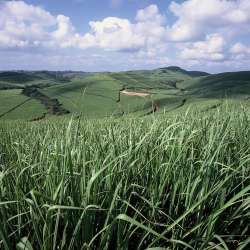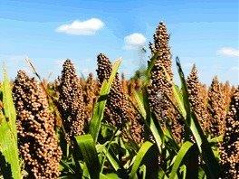
This liquid is distilled and the first run alcohol of about 95% strength is recovered. This is referred to as “Industrial 95” in the industry. This is then redistilled to produce minimum 96% alcohol known in the industry as “rectified spirit”. Other specialised distillation processes will produce 96% potable grade alcohol and minimum 99,9% known as "anhydrous alcohol"..During the distillations molasses solids (MS) and fusel oil are produced at the heavy end. The former is concentrated to form CMS which is sold to the animal feed industry and also used as a fertiliser.

In the grain production process a suitable source of carbohydrate (e.g. maize, sorghum, etc.) is first milled to a fine slurry and an enzyme added. The starch in the milled material is then enzymatically converted to sugar and thereafter the fermentation process is applied as described above, to produce alcohol. The solids remaining after distillation, are dried and the DDGS then sold as an animal feed.
